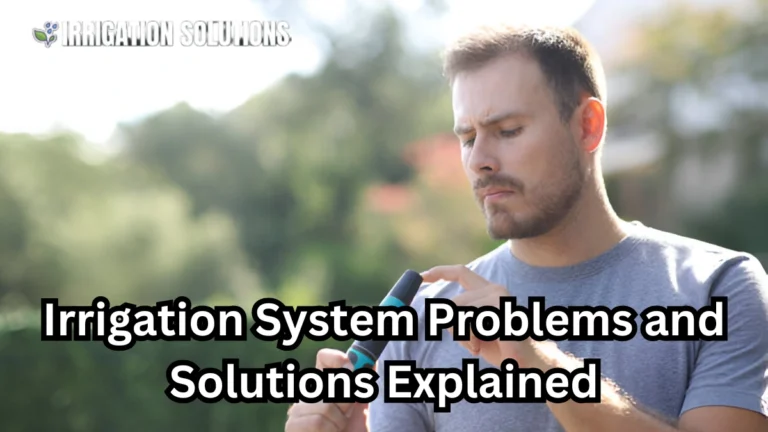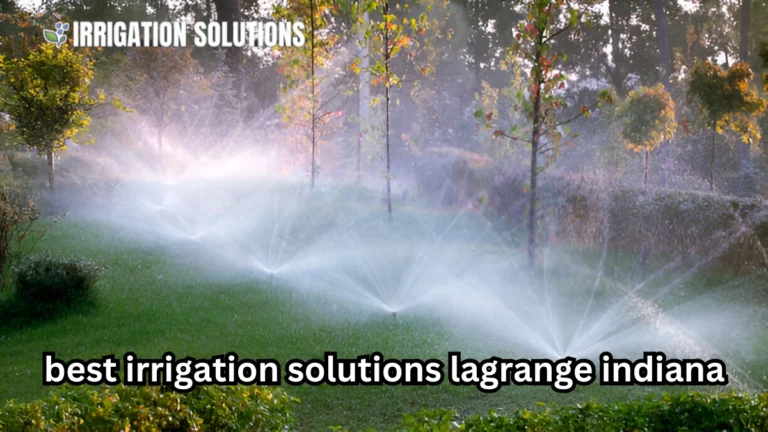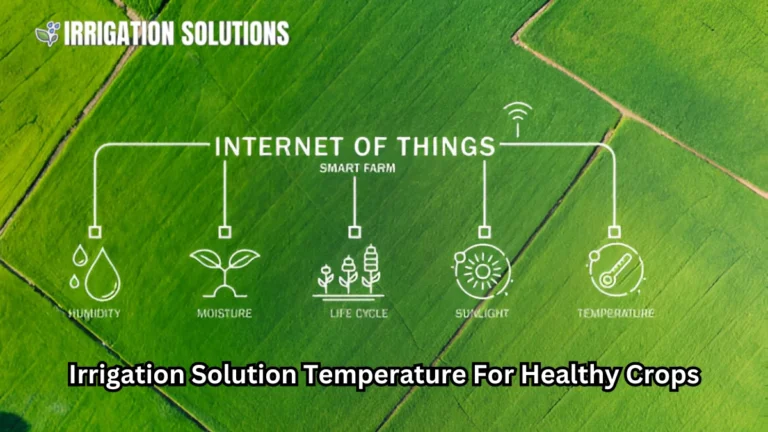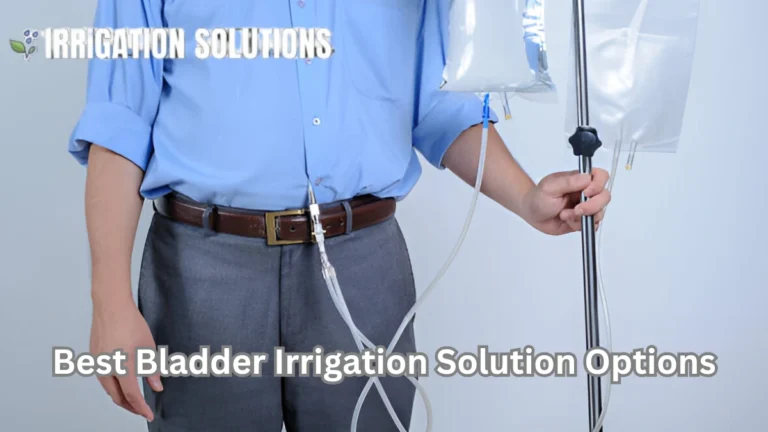Innovative Irrigation Solutions: Revolutionizing Water Efficiency in Agriculture
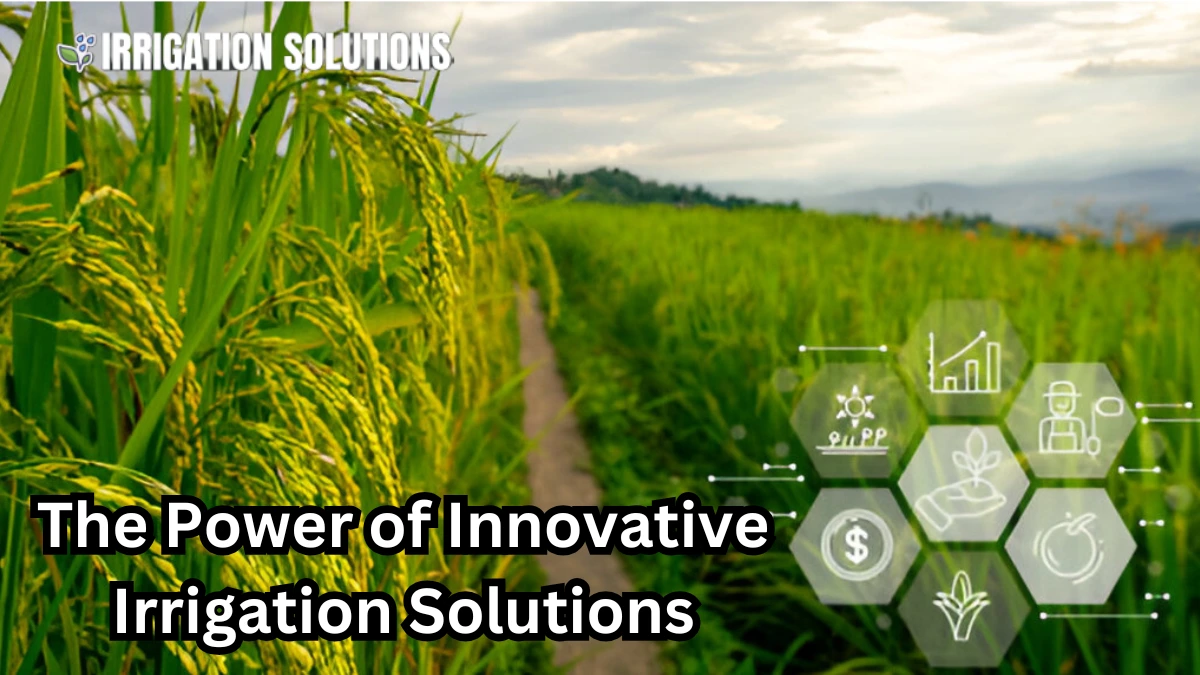
In the world of agriculture, water is the most precious resource, and the efficient use of it is crucial. As the global population grows and climate patterns shift, traditional irrigation methods are often no longer enough to sustain crop production. Innovative irrigation solutions have emerged as game changers, offering new ways to conserve water, increase crop yield, and enhance sustainability. In this post, we’ll dive deep into the various innovative irrigation solutions techniques revolutionizing farming practices today.
The Importance of innovative irrigation solutions
Irrigation accounts for around 70% of global freshwater usage, with agriculture being the largest consumer. With droughts, erratic rainfall, and water shortages becoming more common, the need for better irrigation techniques is undeniable. Not only do traditional systems waste significant amounts of water, but they also fail to deliver the precise amounts needed for each crop. Innovative irrigation solutions aim to solve these issues by utilizing modern technology and sustainable practices.
Traditional vs. innovative irrigation solutions
While traditional irrigation methods like flood and surface irrigation have been in use for centuries, they often lead to water wastage, inefficient distribution, and soil erosion. In contrast, modern methods focus on precision and efficiency. Let’s take a look at how they differ:
| Aspect | Traditional Irrigation | Innovative Irrigation Solutions |
| Water Use | High wastage, over-watering | Efficient, water-saving techniques |
| Control | Low, inconsistent distribution | High, precise control over water use |
| Technology | Minimal or none | Advanced sensors, automation, and AI |
| Cost-Effectiveness | Can be costly due to inefficiency | Lower costs long-term, higher ROI |
By shifting from traditional methods to more innovative solutions, farmers can reduce water consumption, improve yields, and promote environmental sustainability.
Types of innovative irrigation solutions
Now, let’s explore some of the leading irrigation technologies reshaping the agricultural landscape.
Drip Irrigation: Precision at Its Best
Drip irrigation is one of the most efficient irrigation methods, delivering water directly to the plant’s root zone. It minimizes evaporation, runoff, and deep percolation, which are common in other systems like sprinkler irrigation. Drip irrigation systems use tubes, pipes, and emitters to release water slowly and steadily, reducing water wastage.
Benefits:
- Water Conservation: Drip systems can save up to 50% of water compared to traditional methods.
- Increased Yields: With precise water delivery, plants receive exactly what they need for optimal growth.
- Reduced Weed Growth: By targeting water directly to the plant roots, drip irrigation prevents weed growth around crops.
Real-Life Example: Israel, facing significant water scarcity, has widely adopted drip irrigation. This method has helped increase crop yields in desert regions while conserving water resources, enabling Israel to remain a leader in agricultural innovation despite its challenging environment.
Smart innovative irrigation solutions: Harnessing the Power of Data
Smart irrigation systems leverage sensors, weather data, and automation to ensure that crops receive the right amount of water at the right time. These systems adjust irrigation schedules based on soil moisture levels, weather forecasts, and even plant water requirements.
Key Features:
- Sensors: Soil moisture sensors track the amount of water in the soil, adjusting irrigation cycles to match plant needs.
- Weather Integration: Smart systems use weather forecasts to avoid watering during rainfall or high humidity.
- Automation: These systems can operate without human intervention, providing precise control over water usage.
Example in Action: A farm in California implemented a smart irrigation system that uses weather data and soil sensors to adjust irrigation schedules. Israel, facing significant water scarcity, has widely adopted drip irrigation.
Precision Irrigation: Tailoring Watering to the Crop
Precision irrigation takes a step further by applying water at the exact location and time when plants need it most. This technique uses advanced technology, such as GPS and geographic information systems (GIS), to map out the most efficient irrigation zones in a field. The system then applies water to those zones, ensuring that every plant receives the right amount of moisture.
Advantages:
- Reduced Waste: The system distributes water precisely where it’s needed, reducing runoff and evaporation.
- Customization: You can tailor it to different plant types, growth stages, and soil conditions.
Case Study: A vineyard in Spain employed precision irrigation techniques using GIS technology to create irrigation zones tailored to different soil types and moisture levels. This led to a 25% reduction in water usage and an increase in grape quality and quantity.
Underground innovative irrigation solutions: Invisible Efficiency
Underground irrigation, or subsurface drip irrigation, places water delivery lines beneath the soil surface. This applies water directly to the root zone, preventing evaporation and minimizing water loss.
Benefits:
- Water Conservation: It eliminates surface evaporation, making it one of the most water efficient methods.
- Reduced Soil Erosion: Since the system is underground, it prevents soil erosion caused by overwatering or runoff.
- Minimal Weed Growth: The absence of water on the soil surface discourages weed growth.
Challenges:
- Installation Cost: The initial setup cost can be higher due to the need for specialized installation.
- Maintenance: The underground system may require more maintenance, as detecting leaks or blockages can be tricky.
Rainwater Harvesting: Sustainable Water Source
Rainwater harvesting involves capturing and storing rainwater for irrigation use. This method reduces reliance on municipal water sources and can be a sustainable solution in areas prone to drought.
Steps Involved:
- Collection: Rooftops or other surfaces collect rainwater.
- Storage: Tanks or reservoirs store the collected water for later use.
- Distribution: Stored water is then distributed to crops using various irrigation methods like drip or sprinkler systems.
Advantages:
- Reduced Water Bills: By relying on rainwater, farmers can lower their water costs.
- Sustainability: It reduces dependence on groundwater or surface water, contributing to long term environmental sustainability.
Real-Life Example: Farmers in Kenya have adopted rainwater harvesting systems to address water shortages. By capturing rainwater and storing it for dry periods, they’ve been able to maintain crop productivity and reduce irrigation costs.
Fog Nets and Atmospheric Water Generation
In some regions, fog nets and atmospheric water generation (AWG) technologies are being used to harvest water directly from the atmosphere. These methods capture water vapor from the air and condense it into usable water for irrigation.
Fog Nets:
- How it Works: Fog nets are designed to capture tiny water droplets from fog and condense them into water that can be stored for irrigation.
- Where it’s Used: Common in coastal areas or regions with high humidity but limited rainfall.
AWG:
- How it Works: AWG machines extract moisture from the air and filter it to produce fresh water.
- Where it’s Used: AWG systems are ideal for arid regions with high temperatures but low water availability.
Advantages of innovative irrigation solutions:
- Water Source Diversification: These methods provide an alternative water source in areas where conventional sources are scarce.
- Environmentally Friendly: These solutions are sustainable and have minimal environmental impact.
The Future of innovative irrigation solutions: AI and Robotics
The future of irrigation lies in the integration of artificial intelligence (AI) and robotics. These technologies can revolutionize how we approach water management in agriculture. AI algorithms can predict water needs based on weather patterns, crop types, and soil conditions. Meanwhile, robots equipped with sensors and actuators can automate the process of irrigation, ensuring the right amount of water is delivered at the right time.
AI Powered Irrigation Systems
AI-driven irrigation systems use machine learning to analyze vast amounts of data from soil moisture sensors, weather forecasts, and other sources. This data allows AI systems to predict future irrigation needs, optimize water use, and even adjust irrigation schedules in real time.
Robotic Irrigation Assistants
Robots equipped with sensors and GPS can roam fields and apply water precisely where it’s needed. These autonomous systems can be programmed to operate at specific times and even work in adverse weather conditions, increasing efficiency and reducing labor costs.
Conclusion
innovative irrigation solutions are reshaping the agricultural industry, enabling farmers to use water more efficiently, reduce costs, and increase crop yields. As we face water scarcity and climate change, the adoption of these technologies will play a pivotal role in ensuring food security and environmental sustainability. By embracing advancements like drip irrigation, smart systems, and AI, farmers can make the most of every drop of water, paving the way for a more sustainable future in agriculture.



